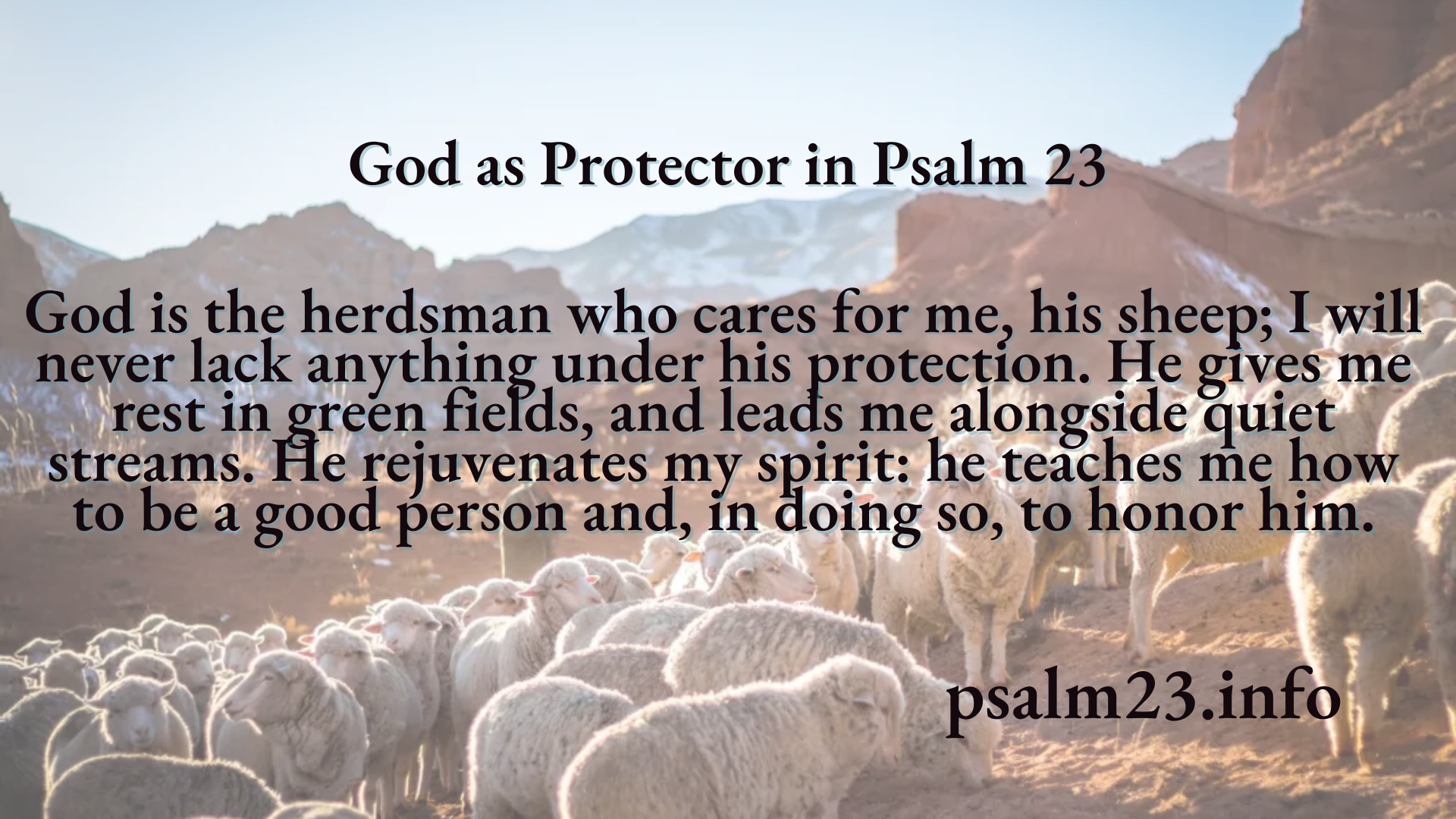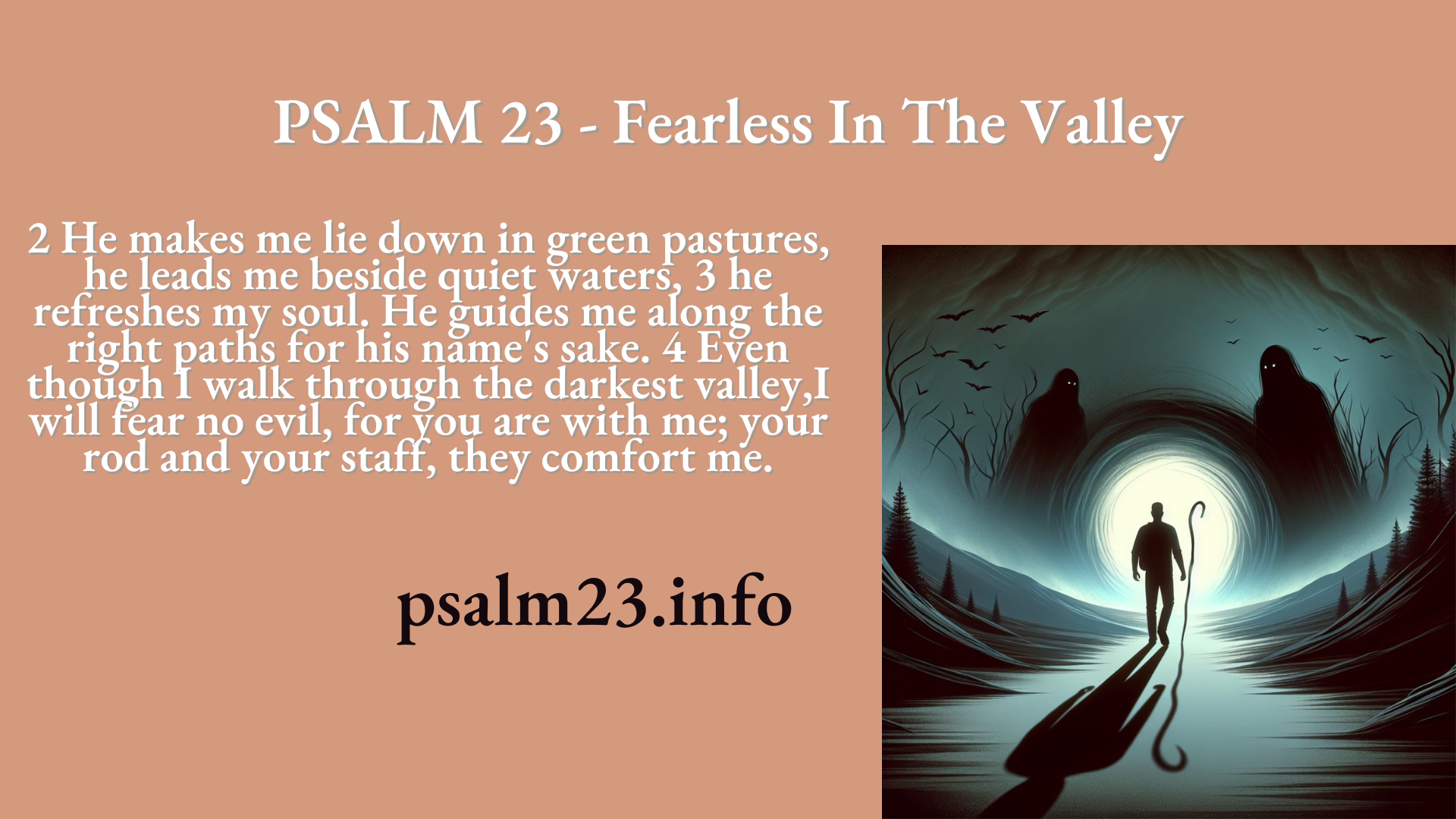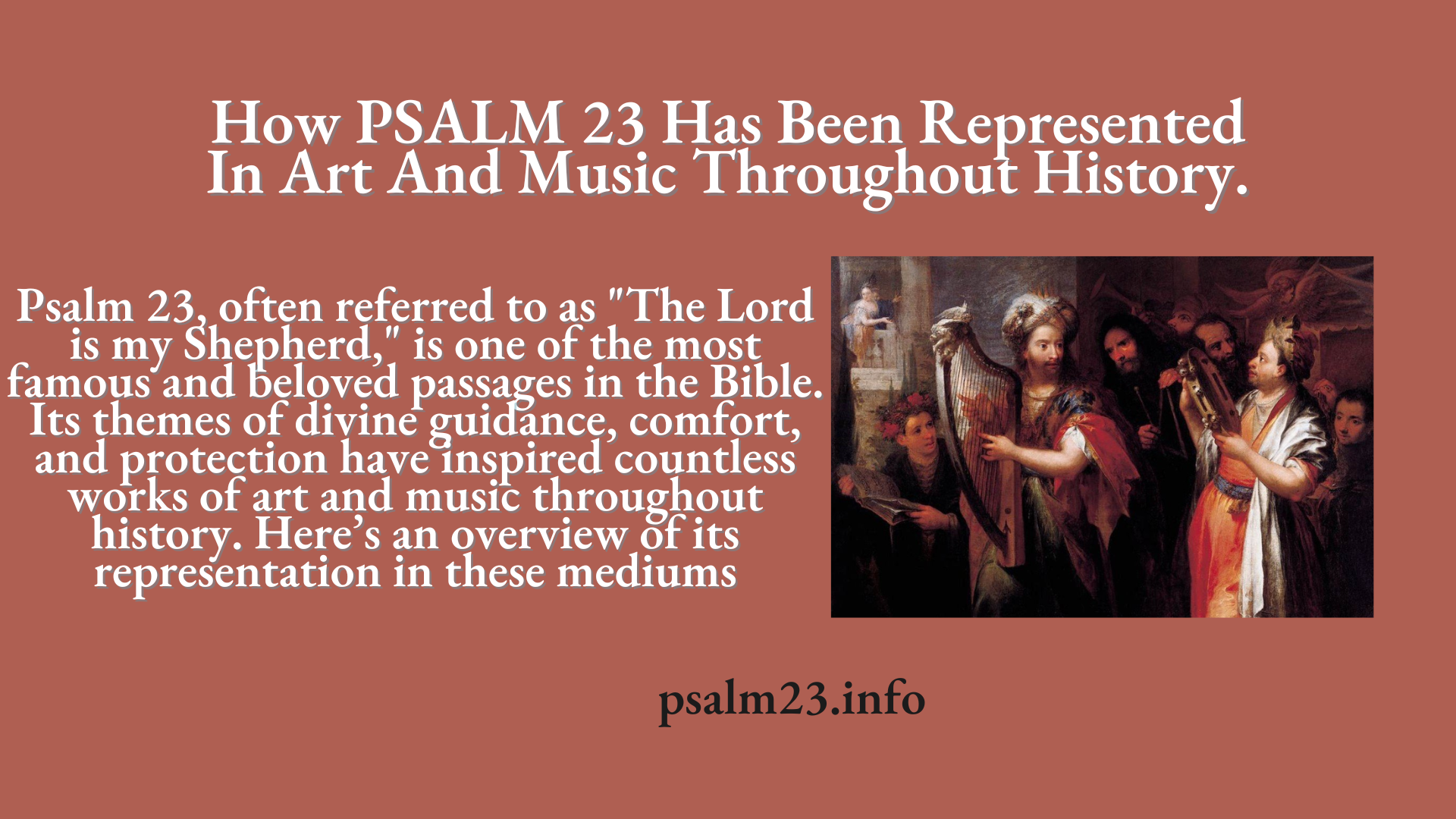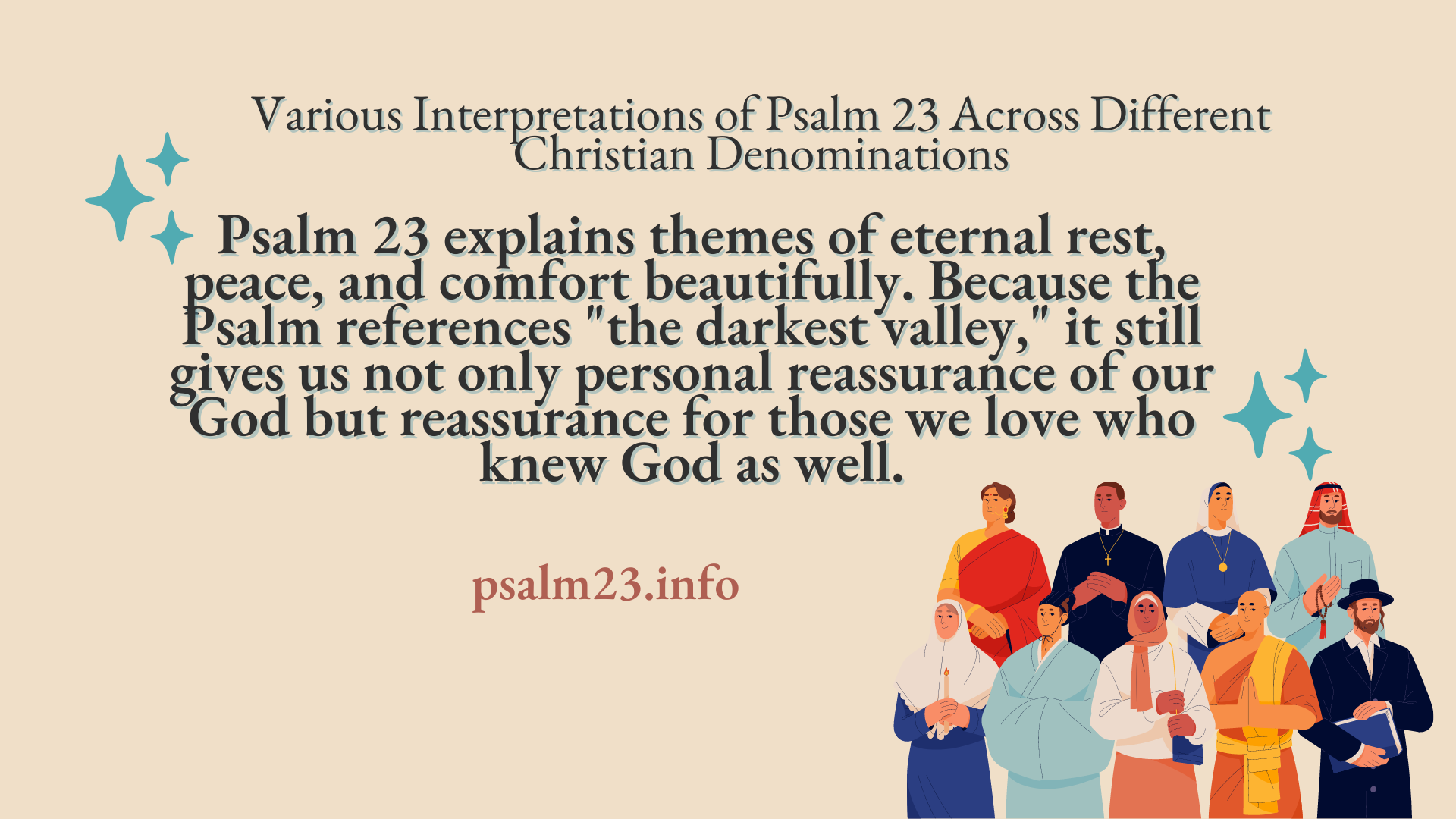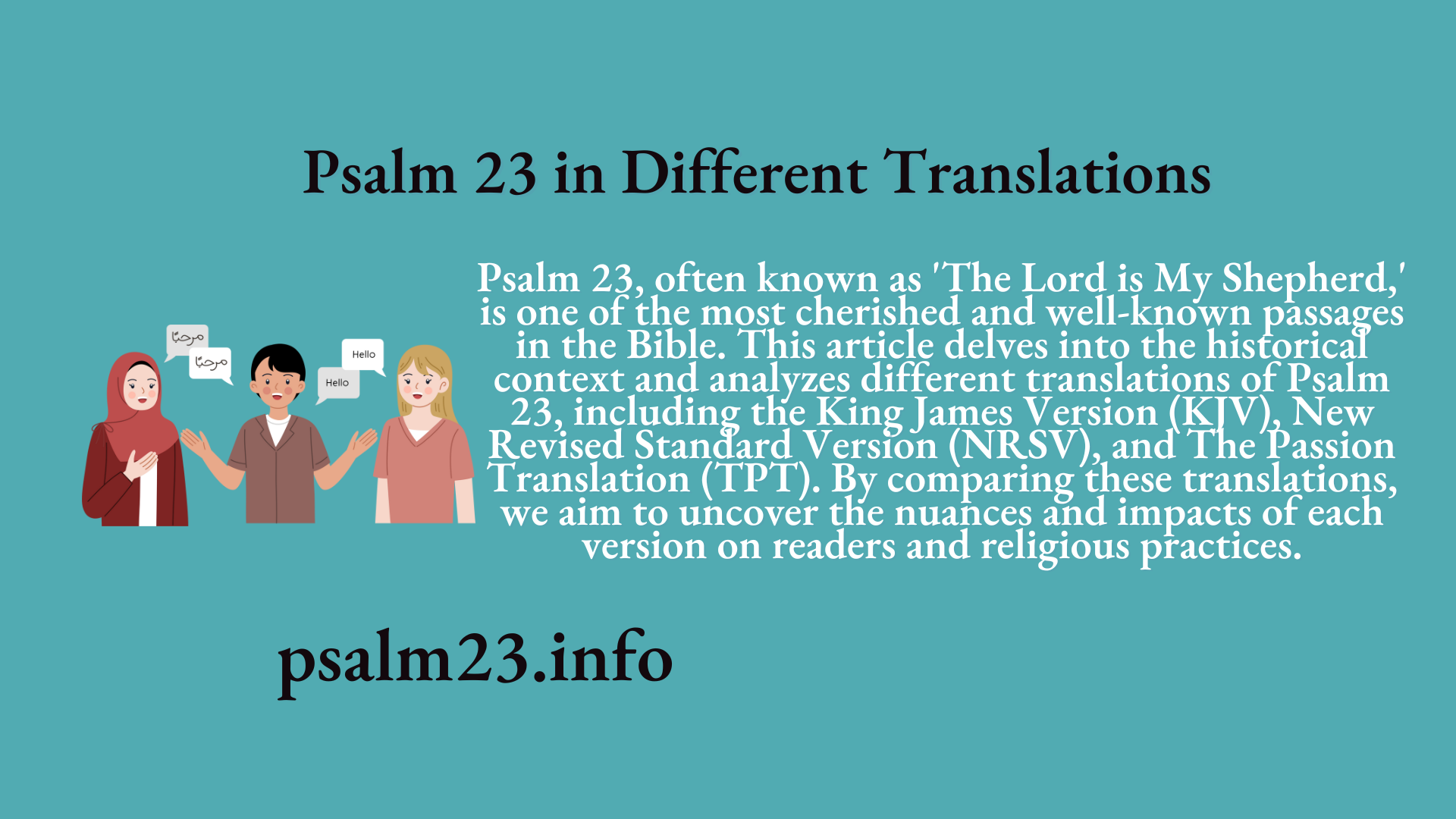
Psalm 23 in Different Translations Key Takeaways
- Psalm 23 holds significant historical and cultural importance in ancient Israel and continues to be pivotal in religious practices today.
- The King James Version (KJV) is renowned for its poetic language and has had a lasting impact on English literature and religious life.
- The New Revised Standard Version (NRSV) offers modern language adaptations and detailed footnotes, providing deeper insights into the text.
- The Passion Translation (TPT) brings a unique, emotional, and devotional tone to Psalm 23, resonating with many contemporary readers.
Understanding the differences between literal and dynamic equivalence translations helps in appreciating the varied interpretations and their theological implications.
Historical Context of Psalm 23
Origins and Authorship
Psalm 23 is traditionally attributed to King David, a central figure in the history of Israel. The psalm’s chief poetic device is the metaphor: God is portrayed as two different archetypal figures in ancient Near Eastern culture, the shepherd and the host. This dual imagery has deep roots in the pastoral and nomadic lifestyle of ancient Israel.
Cultural Significance in Ancient Israel
In ancient Israel, the shepherd was a common and relatable figure, symbolizing guidance, provision, and protection. The metaphor of God as a shepherd would have resonated deeply with the people, reflecting their dependence on divine care. Additionally, the image of God as a host offering hospitality underscores the cultural importance of generosity and refuge.
Psalm 23 in Religious Practices
Psalm 23 has been a cornerstone in Jewish and Christian liturgies for centuries. It is frequently recited in times of distress and at funerals, providing comfort and assurance of God’s presence. The psalm’s enduring popularity in religious practices highlights its profound spiritual and emotional impact.
King James Version (KJV) Analysis
Language and Style
The King James Version (KJV) of the Bible is renowned for its majestic and poetic language. Its use of Early Modern English gives it a timeless quality that has resonated with readers for centuries. The translators aimed to create a version that was both accurate and beautiful, and their success is evident in the enduring popularity of the KJV.
Key Phrases and Their Impact
One of the most famous phrases from Psalm 23 in the KJV is, “The Lord is my shepherd; I shall not want.” This phrase has become deeply embedded in religious and popular culture, often cited for its comforting and reassuring message. The choice of words like “maketh” and “leadeth” adds a sense of solemnity and reverence to the text.
Reception Over Time
Since its publication in 1611, the KJV has been highly regarded and widely used in Christian communities. Its influence extends beyond religious practices, impacting literature, art, and even the English language itself. The KJV’s phrasing and vocabulary have shaped the way many people understand and interpret the Bible.
New Revised Standard Version (NRSV) Insights
Modern Language Adaptations
The NRSV is known for its modern language adaptations that make the text more accessible to contemporary readers. This version aims to balance readability with maintaining the original meaning of the scriptures. The translators have taken care to use inclusive language where appropriate, which is a significant departure from older translations.
Footnotes and Annotations
One of the standout features of the NRSV is its extensive footnotes and annotations. These notes provide additional context and insights that can help readers understand the text more deeply. For example, the footnotes often include alternative translations and explanations of cultural or historical references. This can be particularly useful for those following a structured reading plan, such as the classic M’Cheyne plan.
Comparative Analysis with KJV
When compared to the King James Version (KJV), the NRSV offers a more modern and inclusive approach. While the KJV is celebrated for its poetic language, the NRSV focuses on clarity and accuracy. This makes it a preferred choice for academic study and for those who seek a deeper understanding of the scriptures. The differences in language and style between the two versions can lead to different interpretations and insights, enriching the reader’s experience.
The Passion Translation (TPT) Perspective
Unique Interpretations
The Passion Translation (TPT) offers a heart-level translation that aims to express God’s fiery heart of love. This version uses Hebrew, Greek, and Aramaic manuscripts to bring out the emotional and spiritual nuances of the text. For instance, Psalm 23 in TPT begins with, “The Lord is my best friend and my shepherd,” which adds a layer of intimacy not found in more traditional translations.
Emotional and Devotional Tone
TPT is known for its emotional and devotional tone, making it a popular choice for personal devotions. The language is designed to evoke a deep emotional response, helping readers to connect with the text on a personal level. Phrases like “an oasis of peace” and “the quiet brook of bliss” are crafted to create a serene and contemplative atmosphere.
Reader Reception
The reception of TPT has been mixed. While many readers appreciate its fresh and intimate approach, others criticize it for straying too far from the original texts. However, it has found a dedicated audience among those who seek a more personal and emotional connection with the Scriptures. The translation’s unique interpretations and emotional tone make it a distinctive choice for modern readers.
Comparing Literal and Dynamic Equivalence Translations
Definition and Examples
Literal translations aim to stay as close as possible to the original text, often translating word-for-word. In contrast, dynamic equivalence translations focus on conveying the thought or meaning behind the original text, sometimes at the expense of a direct word-for-word translation. The KJV was translated in 1611 and was more or less a ‘word for word’ translation whereas the NIV is a modern ‘dynamic equivalence’ version.
Strengths and Weaknesses
**Literal Translations: **
- Strengths: High fidelity to the original text, useful for in-depth study.
- Weaknesses: Can be difficult to read and understand, may not convey the full meaning.
**Dynamic Equivalence Translations: **
- Strengths: Easier to read and understand, often more accessible to modern readers.
- Weaknesses: May lose some nuances of the original text, can be seen as less ‘accurate.’
Impact on Psalm 23
Literal translations of Psalm 23, like the KJV, offer a word-for-word rendering that preserves the original structure and phrasing. Dynamic equivalence translations, such as the NRSV, aim to make the text more relatable to contemporary readers, sometimes altering the phrasing to better convey the intended meaning.
Personal Reflections on Different Translations
Choosing a Preferred Version
When choosing a preferred version of Psalm 23, it’s essential to see how different translators chose to translate the same Hebrew text. Each translation can bring out a unique shade of meaning that might not be evident in another. This process is like examining a Bible passage from several different angles to ensure you understand the full meaning and message.
Impact on Personal Faith
Reading Psalm 23 in various translations can profoundly impact personal faith. As you read the Psalms, you will find that they read you, identifying the thoughts of your heart and leading you to deeper spiritual insights. This reflective process can help you rethink or re-imagine a verse’s meaning, enriching your spiritual journey.
Community Discussions and Preferences
In community discussions, comparing different translations of the same Bible passage can be enlightening. For example, looking up Psalm 23 in multiple translations and discussing the differences can reveal how each version resonates differently with individuals. This practice can foster a deeper understanding and appreciation of the text within a community setting.
Psalm 23 in Different Translations Conclusion
In conclusion, the comparison of different Bible translations of Psalm 23 reveals the rich tapestry of language and interpretation that each version brings to this beloved scripture. Whether it is the poetic cadence of the King James Version, the contemporary clarity of the New International Version, or the intimate tone of the Passion Translation, each rendition offers unique insights and resonates differently with readers. This exploration underscores the importance of considering multiple translations to gain a deeper and more nuanced understanding of the text. Ultimately, the diverse translations of Psalm 23 enrich our appreciation of its timeless message of comfort and guidance.
Psalm 23 in Different Translations Frequently Asked Questions
What is the main focus of Psalm 23?
Psalm 23 is a passage from the Bible that portrays God as a shepherd who provides, guides, and cares for His people, offering them comfort and protection.
Why are there different translations of Psalm 23?
Different translations of Psalm 23 exist to reflect variations in language, cultural context, and interpretation. These translations aim to make the text more accessible and meaningful to diverse audiences.
What is the difference between the King James Version and the New Revised Standard Version of Psalm 23?
The King James Version (KJV) uses older, more formal English and has a poetic style, while the New Revised Standard Version (NRSV) employs contemporary language and includes footnotes and annotations for additional context.
How does The Passion Translation interpret Psalm 23?
The Passion Translation (TPT) offers a unique, emotive, and devotional tone, aiming to capture the heart and essence of the original text in a way that resonates deeply with readers on a personal level.
What are literal and dynamic equivalence translations?
Literal translations aim to stay as close as possible to the exact wording and structure of the original text, while dynamic equivalence translations focus on conveying the meaning and intent in a way that is more understandable and relatable to modern readers.
How do translation choices impact the theological understanding of Psalm 23?
Translation choices can influence the doctrinal interpretation, worship practices, and personal devotion by highlighting different aspects of the text, such as its language, imagery, and underlying messages.
